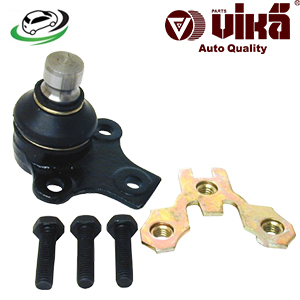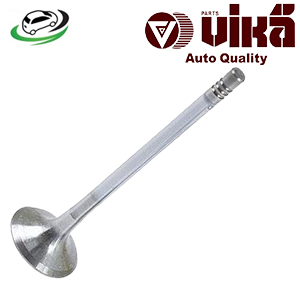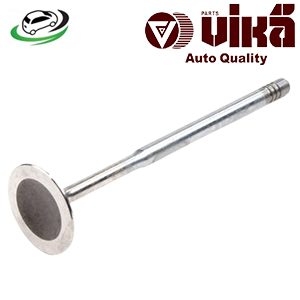-7%
Get Intake Valve Audi B5 A4 1.8T/Audi B5 A4 V6 30v/Audi B5 S4/Audi B6 A4 1.8T / VW Golf/Bora/Passat 1.8t 20v Turbo 058109601C
The intake valve is a crucial component in an internal combustion engine, playing a significant role in the engine’s air intake system. It controls the flow of air (or air-fuel mixture) into the combustion chamber, directly impacting engine performance, efficiency, and emissions. This comprehensive guide will explore what an intake valve is, how it functions, its benefits, common issues, and maintenance tips.
What is an Intake Valve?
An intake valve is a mechanical component in an engine’s cylinder head that opens and closes to regulate the flow of air or air-fuel mixture into the combustion chamber. It is part of the engine’s valve train, which includes other components such as the exhaust valve, camshaft, and rocker arms. The intake valve’s primary function is to allow air or the air-fuel mixture to enter the combustion chamber during the intake stroke of the engine cycle.
How Does an Intake Valve Work?
The intake valve operates through the following mechanisms:
- Valve Timing: The timing of the intake valve’s opening and closing is controlled by the camshaft. The camshaft rotates and pushes against the rocker arm, which in turn moves the valve open. The valve closes when the camshaft moves away, allowing it to return to its seat.
- Airflow Regulation: When the intake valve opens, it allows air (or air-fuel mixture) to flow from the intake manifold into the combustion chamber. The valve remains open during the intake stroke, which is the part of the engine cycle when the piston moves downward, creating a vacuum that draws air into the chamber.
- Valve Sealing: Once the intake stroke is complete, the intake valve closes and seals the combustion chamber. This prevents the air-fuel mixture from escaping and allows for compression during the compression stroke of the engine cycle.
- Precision and Control: The design and precision of the intake valve ensure that the right amount of air or air-fuel mixture enters the combustion chamber. This is crucial for optimal engine performance, fuel efficiency, and emissions control.
Benefits of a Properly Functioning Intake Valve
A well-maintained intake valve offers several important benefits for engine performance and efficiency:
- Improved Engine Performance: A properly functioning intake valve ensures optimal airflow into the combustion chamber, leading to better engine performance, including increased power and responsiveness.
- Enhanced Fuel Efficiency: By allowing the right amount of air or air-fuel mixture into the combustion chamber, the intake valve helps optimize the combustion process, which can improve fuel efficiency and reduce fuel consumption.
- Reduced Emissions: Efficient air intake and combustion contribute to lower emissions, helping the engine comply with environmental regulations and reducing the vehicle’s environmental impact.
- Smooth Engine Operation: A well-maintained intake valve contributes to smooth engine operation, reducing rough idling, misfires, and other performance issues that can affect drivability.
- Longevity of Engine Components: Proper intake valve function helps prevent issues such as carbon buildup or incomplete combustion, which can lead to premature wear and damage to other engine components.
Common Issues with Intake Valves
Intake valves can experience various issues that may affect their performance and the overall engine system. Common problems include:
- Carbon Deposits: Over time, carbon deposits can accumulate on the intake valve, reducing airflow and affecting engine performance. This can lead to reduced power, poor fuel efficiency, and increased emissions.
- Valve Wear: Regular use can cause wear on the intake valve, including the valve seat and sealing surfaces. Worn valves may result in poor sealing, reduced performance, and potential engine misfires.
- Sticking Valves: Intake valves may become sticky or stuck due to contaminants, lack of lubrication, or mechanical issues. Sticking valves can cause problems with airflow and engine operation.
- Valve Burn: Excessive heat or improper combustion can cause the intake valve to become burned or damaged. Valve burn can affect performance and may require replacement of the valve.
- Incorrect Valve Timing: If the camshaft or timing mechanism is out of adjustment, it can lead to incorrect valve timing, affecting the opening and closing of the intake valve and overall engine performance.
Signs of a Failing Intake Valve
Identifying the signs of a failing intake valve can help address issues before they lead to more severe engine problems. Common symptoms include:
- Reduced Engine Power: A noticeable decrease in engine power or acceleration can indicate problems with the intake valve, such as reduced airflow or incomplete combustion.
- Poor Fuel Efficiency: If the vehicle’s fuel efficiency decreases significantly, it may be related to issues with the intake valve affecting the air-fuel mixture.
- Engine Misfires: Engine misfires, rough idling, or hesitation during acceleration can be a sign of problems with the intake valve, such as improper sealing or carbon buildup.
- Increased Emissions: Higher levels of exhaust emissions, including smoke or unusual odors, may indicate issues with the intake valve affecting the combustion process.
- Unusual Noises: If the engine produces unusual noises, such as popping or backfiring, it could be related to problems with the intake valve or valve timing.
Maintenance and Replacement
Regular maintenance and timely replacement of intake valves are essential for ensuring reliable engine performance and efficiency. Here are some maintenance tips:
- Regular Inspections: Periodically inspect the intake valves and related components for signs of wear, carbon buildup, or damage. Regular maintenance can help identify issues early and prevent more severe problems.
- Clean Intake Valves: Use appropriate cleaning methods to remove carbon deposits and contaminants from the intake valves. This can help maintain optimal airflow and performance.
- Check Valve Timing: Ensure that the valve timing is correctly set according to the manufacturer’s specifications. Proper timing is crucial for the correct operation of the intake valves.
- Use High-Quality Fuel: Use high-quality fuel and follow the manufacturer’s recommendations for fuel additives or treatments to reduce carbon buildup and maintain clean intake valves.
- Professional Inspection: If you suspect a problem with the intake valves or the engine system, have a professional mechanic inspect the vehicle for a thorough diagnosis and repair.
Replacement Procedure
Replacing an intake valve typically involves the following steps:
- Preparation: Ensure the engine is cool and the vehicle is on a level surface. Gather the necessary tools and a replacement intake valve.
- Remove the Intake Manifold: Depending on the vehicle, you may need to remove the intake manifold and other components to access the intake valves. Follow the manufacturer’s instructions for disassembly.
- Remove the Old Valve: Carefully remove the old intake valve from its seating area. This may involve removing retaining clips, bolts, or other fasteners.
- Install the New Valve: Position the new intake valve in place and secure it with the appropriate fasteners or clips. Ensure that the valve is properly seated and aligned.
- Reassemble Components: Reinstall any components that were removed during the replacement process, such as the intake manifold or other related parts.
- Check for Proper Operation: Start the engine and check for proper operation of the new intake valve. Listen for any unusual noises and verify that the engine runs smoothly.
- Test Drive: Take the vehicle for a test drive to ensure that the new intake valve and engine system are functioning correctly and that there are no issues with performance or handling.
Follow us on Facebook for more parts.



